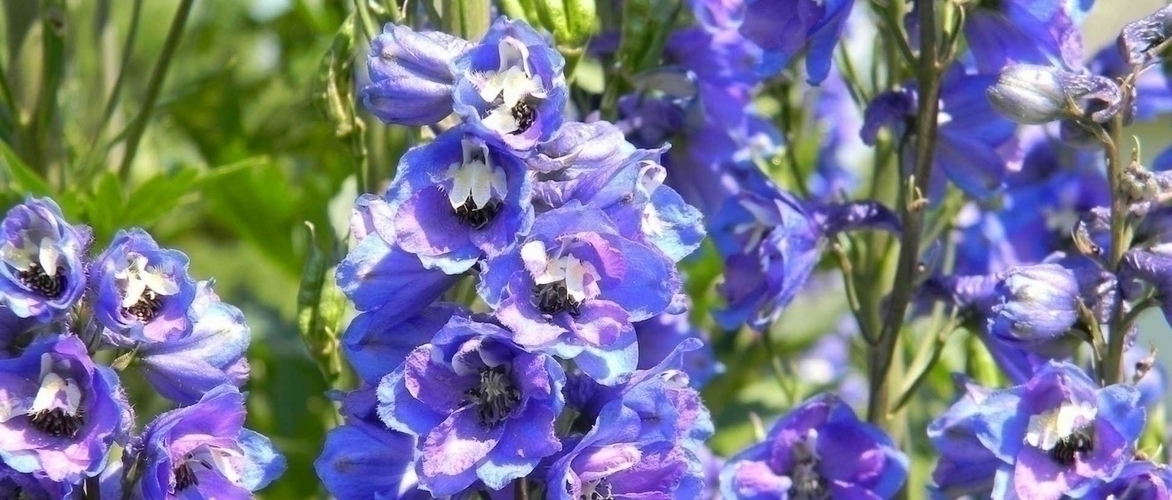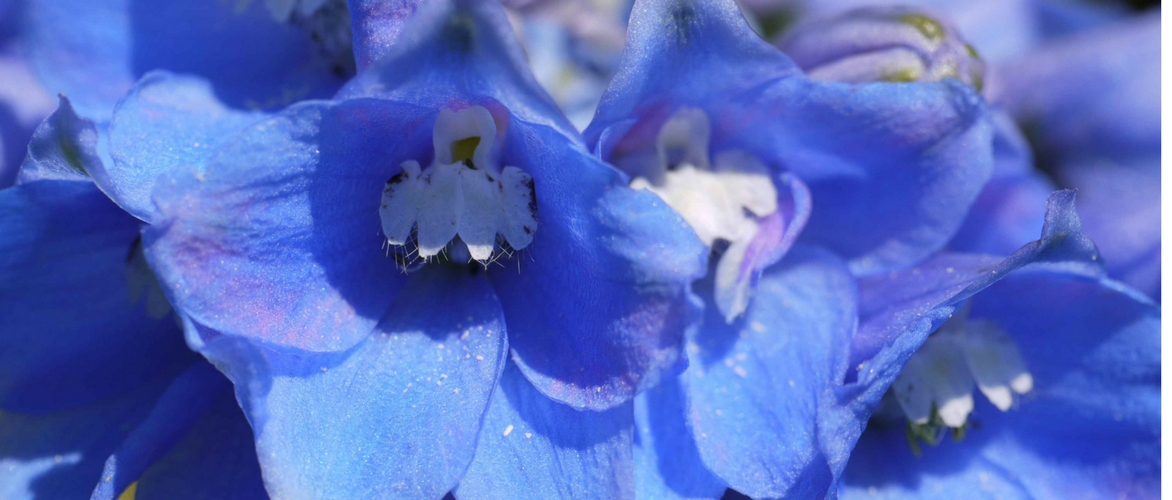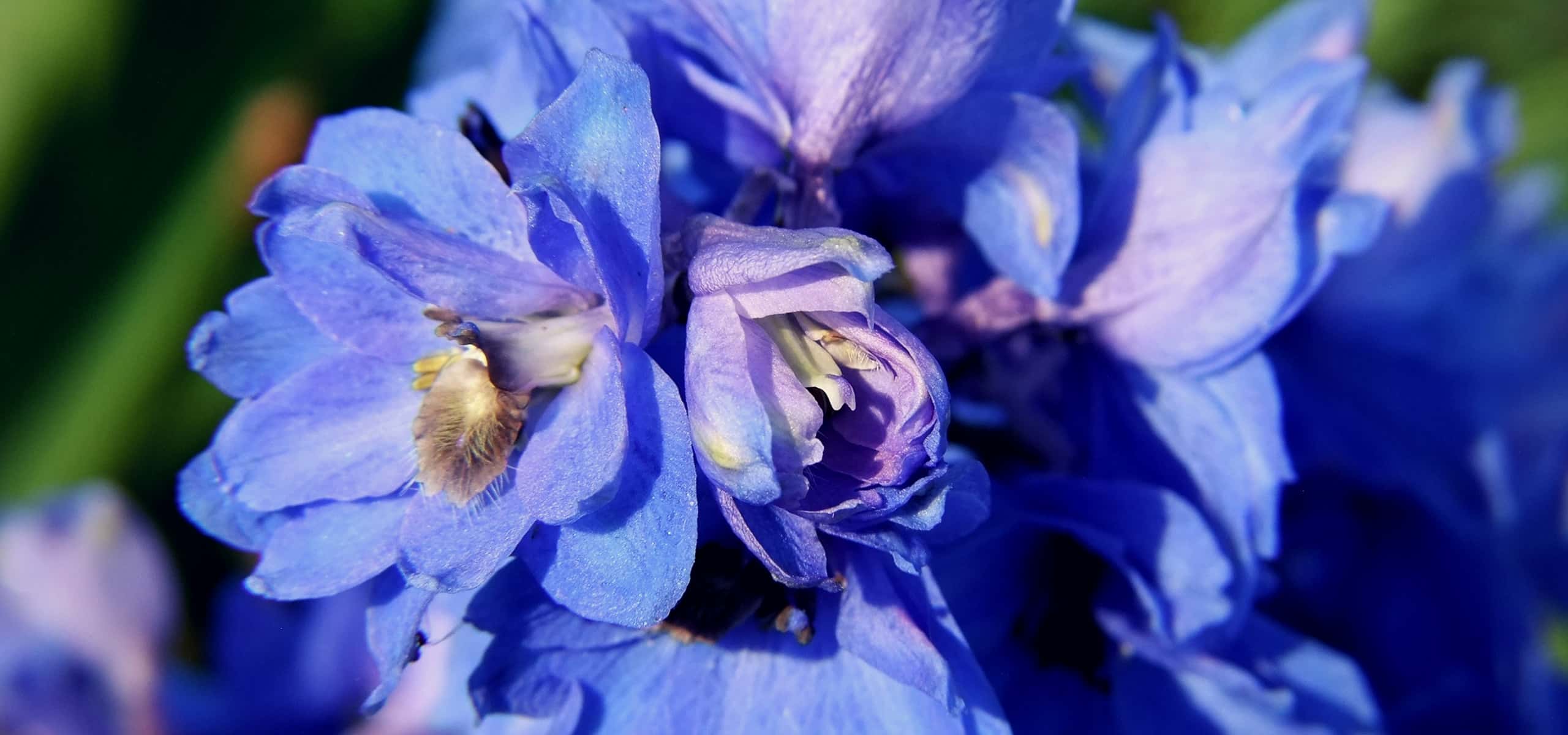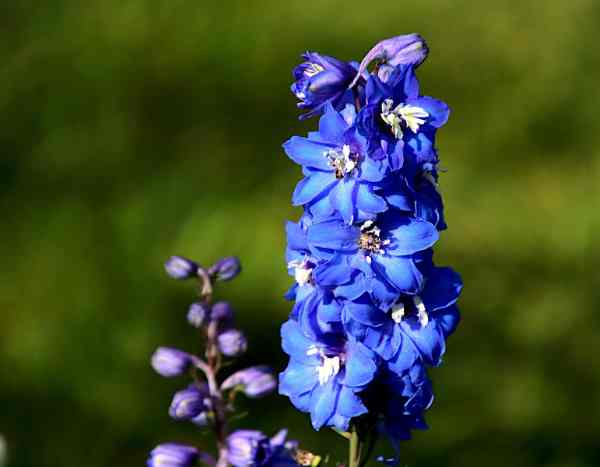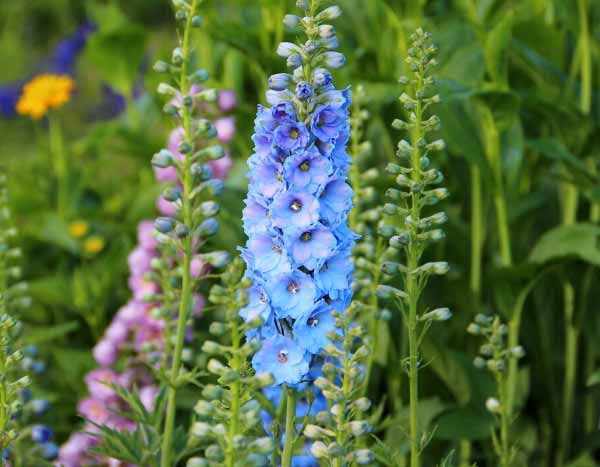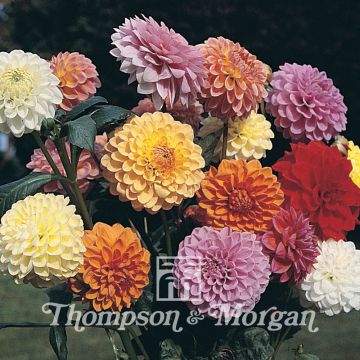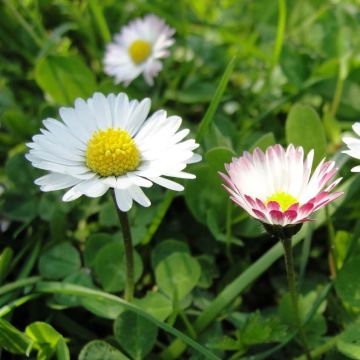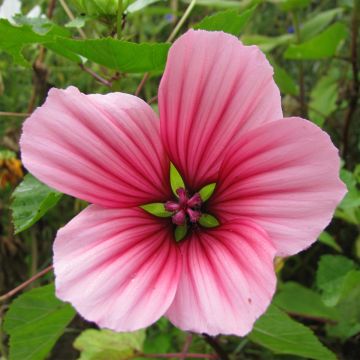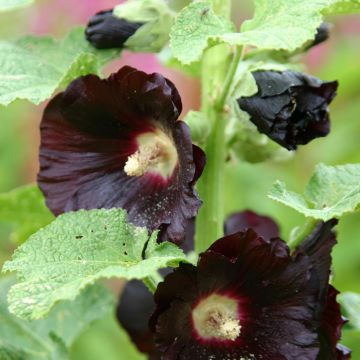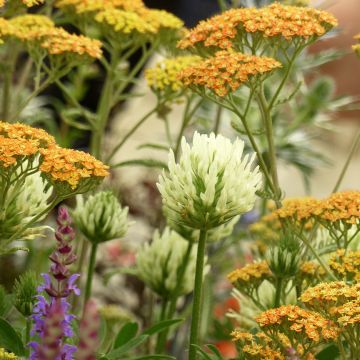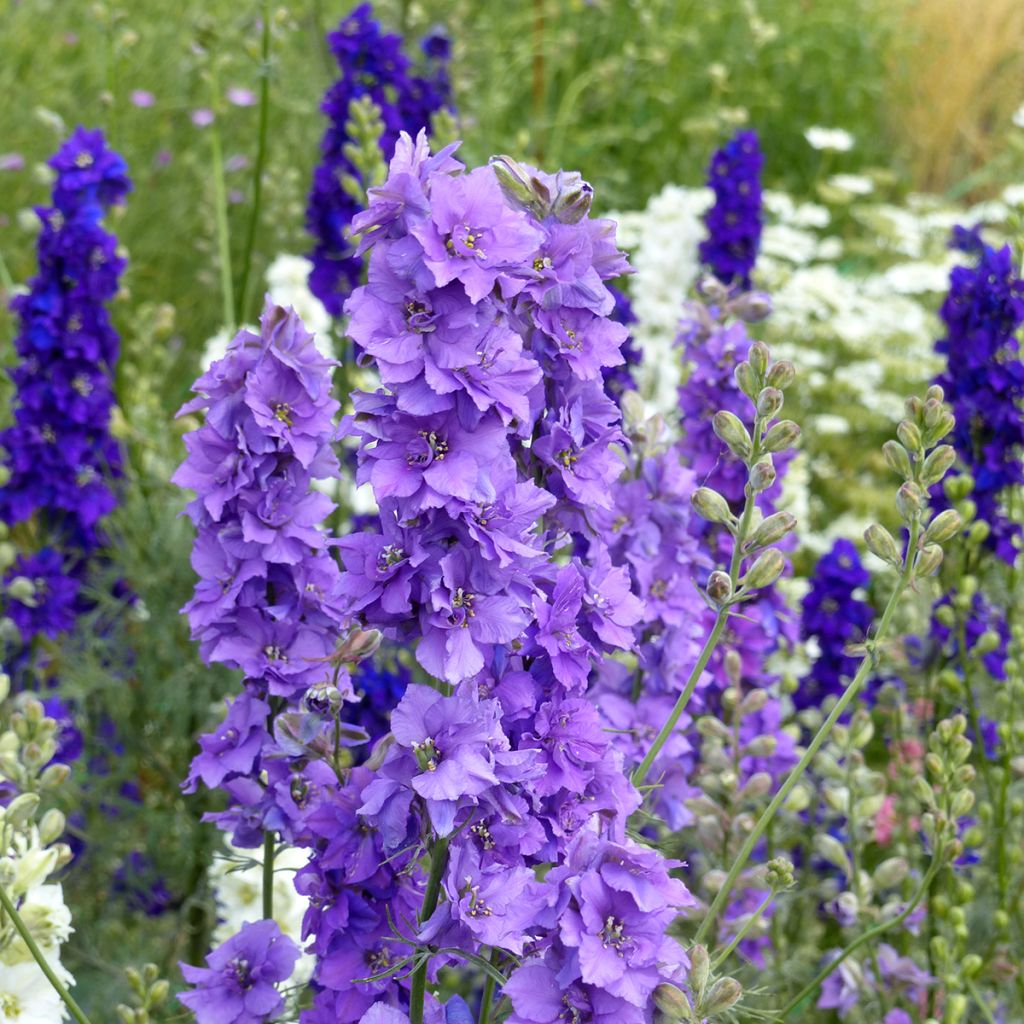

Delphinium consolida Imperial QIS Lilac - Larkspur seeds
Delphinium consolida Imperial QIS Lilac - Larkspur seeds
Delphinium consolida Lilac
Larkspur, Annual Larkspur
Special offer!
Receive a €20 voucher for any order over €90 (excluding delivery costs, credit notes, and plastic-free options)!
1- Add your favorite plants to your cart.
2- Once you have reached €90, confirm your order (you can even choose the delivery date!).
3- As soon as your order is shipped, you will receive an email containing your voucher code, valid for 3 months (90 days).
Your voucher is unique and can only be used once, for any order with a minimum value of €20, excluding delivery costs.
Can be combined with other current offers, non-divisible and non-refundable.
Home or relay delivery (depending on size and destination)
Schedule delivery date,
and select date in basket
This plant carries a 6 months recovery warranty
More information
We guarantee the quality of our plants for a full growing cycle, and will replace at our expense any plant that fails to recover under normal climatic and planting conditions.
Would this plant suit my garden?
Set up your Plantfit profile →
Description
Delphinium Imperial QIS® Lilac is an elegant annual variety, cultivated for its soft mauve, long floral spikes, ideal for cut flowers or romantic gardens. With an upright and airy habit, this plant produces straight, sturdy stems reaching between 80 and 100 cm, adorned with slightly wavy double flowers. It thrives in sunny positions and rich, well-drained soils. Whether in pots or in the ground, it offers generous and continuous flowering from May to September, provided it is lightly staked if exposed to wind. Perfect for cottage garden borders or beds, it also makes lovely rustic bouquets.
Delphinium Imperial QIS® Lilac is an annual cultivar from the Ranunculaceae family, belonging to the genus Consolida, often considered synonymous with Delphinium in horticultural classification. Its full botanical name is now Consolida ajacis, although synonyms such as Delphinium consolida or Consolida ambigua are also used. This species is native to the Mediterranean basin, particularly southern Europe and western Asia, where it grows naturally in open meadows and grassy areas, thriving in well-drained, sunny soils. The QIS® Lilac cultivar has been selected for its exceptional qualities as a cut flower, offering remarkable uniformity, intense colour, and robust stems. It has an upright habit, reaching a height of 80 to 100 cm, with sturdy stems bearing dense floral spikes 25 to 30 cm long in the year of sowing. The flowers are mostly double, with a small percentage being single, and measure approximately 2 to 3 cm in diameter. Flowering extends from May to September. The medium green foliage is finely divided and the stems are smooth and sturdy. The root system is a taproot, making the plant sensitive to disturbance during transplanting.
Delphinium Imperial QIS Lilac integrates elegantly into compositions. Its pale mauve spikes, standing tall on robust stems, bring majestic structure to sunny borders. To accentuate this height, pair it with Ammi visnaga, whose white umbels offer airy lightness, and Linum perenne 'Sapphire, which adds a touch of delicate blue. A few notes of scabious 'Black Knight' subtly warm the ensemble. This variety is also excellent for bouquets, thanks to the vase life of its cut flowers, which can even be dried. To prepare for drying, cut the open flowers into small bunches, hang the stems upside down, and store them in a dry, well-ventilated area away from sunlight.
Flowering
Foliage
Plant habit
Safety measures
Botanical data
Delphinium
consolida
Lilac
Ranunculaceae
Larkspur, Annual Larkspur
Consolida ajacis Imperial QIS® Lilac
Cultivar or hybrid
ingestion
Cette plante est toxique si elle est ingérée volontairement ou involontairement.
Ne la plantez pas là où de jeunes enfants peuvent évoluer, et lavez-vous les mains après l'avoir manipulée.
Pensez à conserver l'étiquette de la plante, à la photographier ou à noter son nom, afin de faciliter le travail des professionnels de santé.
Davantage d'informations sur https://plantes-risque.info
Planting and care
Sow Delphinium Imperial QIS Lilac directly outdoors from April to May in full sun, in fertile, light, well-drained soil that has been well loosened beforehand.
Bury the fine seeds at a depth of 6mm in small holes spaced 30cm apart. Keep the soil moist by watering regularly, especially during dry periods. Germination usually takes 14 to 21 days. When the seedlings are large enough to handle, thin them out by planting only one young plant every 15 cm.
For earlier flowering, sow Delphinium seeds from August to October in 7.5 cm pots using good quality compost kept moist. Place the pots in a propagator or inside a plastic bag at a temperature of 15-20°C until germination. Once the seedlings have developed, move them to a bright but cooler location. Overwinter the plants in a cool, bright place sheltered from frost, watering sparingly. Transplant them to their final position the following spring.
Water regularly until the young plants are fully established. Place sturdy sticks among plants when they reach 10cm tall, allowing them to grow upwards while being supported. You can also stake the plants with bamboo canes. Regularly remove faded flowers to encourage renewed flowering. Delphiniums appreciate sunny positions sheltered from wind, as well as fertile soil rich in organic matter and well-drained.
Sowing period
Intended location
Planting & care advice
This item has not been reviewed yet - be the first to leave a review about it.
Similar products
Haven't found what you were looking for?
Hardiness is the lowest winter temperature a plant can endure without suffering serious damage or even dying. However, hardiness is affected by location (a sheltered area, such as a patio), protection (winter cover) and soil type (hardiness is improved by well-drained soil).

Photo Sharing Terms & Conditions
In order to encourage gardeners to interact and share their experiences, Promesse de fleurs offers various media enabling content to be uploaded onto its Site - in particular via the ‘Photo sharing’ module.
The User agrees to refrain from:
- Posting any content that is illegal, prejudicial, insulting, racist, inciteful to hatred, revisionist, contrary to public decency, that infringes on privacy or on the privacy rights of third parties, in particular the publicity rights of persons and goods, intellectual property rights, or the right to privacy.
- Submitting content on behalf of a third party;
- Impersonate the identity of a third party and/or publish any personal information about a third party;
In general, the User undertakes to refrain from any unethical behaviour.
All Content (in particular text, comments, files, images, photos, videos, creative works, etc.), which may be subject to property or intellectual property rights, image or other private rights, shall remain the property of the User, subject to the limited rights granted by the terms of the licence granted by Promesse de fleurs as stated below. Users are at liberty to publish or not to publish such Content on the Site, notably via the ‘Photo Sharing’ facility, and accept that this Content shall be made public and freely accessible, notably on the Internet.
Users further acknowledge, undertake to have ,and guarantee that they hold all necessary rights and permissions to publish such material on the Site, in particular with regard to the legislation in force pertaining to any privacy, property, intellectual property, image, or contractual rights, or rights of any other nature. By publishing such Content on the Site, Users acknowledge accepting full liability as publishers of the Content within the meaning of the law, and grant Promesse de fleurs, free of charge, an inclusive, worldwide licence for the said Content for the entire duration of its publication, including all reproduction, representation, up/downloading, displaying, performing, transmission, and storage rights.
Users also grant permission for their name to be linked to the Content and accept that this link may not always be made available.
By engaging in posting material, Users consent to their Content becoming automatically accessible on the Internet, in particular on other sites and/or blogs and/or web pages of the Promesse de fleurs site, including in particular social pages and the Promesse de fleurs catalogue.
Users may secure the removal of entrusted content free of charge by issuing a simple request via our contact form.
The flowering period indicated on our website applies to countries and regions located in USDA zone 8 (France, the United Kingdom, Ireland, the Netherlands, etc.)
It will vary according to where you live:
- In zones 9 to 10 (Italy, Spain, Greece, etc.), flowering will occur about 2 to 4 weeks earlier.
- In zones 6 to 7 (Germany, Poland, Slovenia, and lower mountainous regions), flowering will be delayed by 2 to 3 weeks.
- In zone 5 (Central Europe, Scandinavia), blooming will be delayed by 3 to 5 weeks.
In temperate climates, pruning of spring-flowering shrubs (forsythia, spireas, etc.) should be done just after flowering.
Pruning of summer-flowering shrubs (Indian Lilac, Perovskia, etc.) can be done in winter or spring.
In cold regions as well as with frost-sensitive plants, avoid pruning too early when severe frosts may still occur.
The planting period indicated on our website applies to countries and regions located in USDA zone 8 (France, United Kingdom, Ireland, Netherlands).
It will vary according to where you live:
- In Mediterranean zones (Marseille, Madrid, Milan, etc.), autumn and winter are the best planting periods.
- In continental zones (Strasbourg, Munich, Vienna, etc.), delay planting by 2 to 3 weeks in spring and bring it forward by 2 to 4 weeks in autumn.
- In mountainous regions (the Alps, Pyrenees, Carpathians, etc.), it is best to plant in late spring (May-June) or late summer (August-September).
The harvesting period indicated on our website applies to countries and regions in USDA zone 8 (France, England, Ireland, the Netherlands).
In colder areas (Scandinavia, Poland, Austria...) fruit and vegetable harvests are likely to be delayed by 3-4 weeks.
In warmer areas (Italy, Spain, Greece, etc.), harvesting will probably take place earlier, depending on weather conditions.
The sowing periods indicated on our website apply to countries and regions within USDA Zone 8 (France, UK, Ireland, Netherlands).
In colder areas (Scandinavia, Poland, Austria...), delay any outdoor sowing by 3-4 weeks, or sow under glass.
In warmer climes (Italy, Spain, Greece, etc.), bring outdoor sowing forward by a few weeks.






























